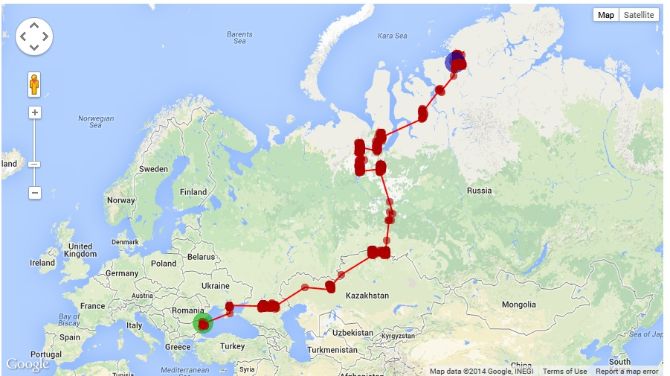Romanian, Bulgarian rare red-breasted geese, affected by wind farms, agriculture changes, make it to Siberia after three-month migration

Two endangered red-breasted geese, one of which bears the historic Romanian name of Decebal, recently finished their 6,000 – kilometer migration trip to the Taymyr peninsula in Siberia, after leaving Romania and Bulgaria in March, according to Hotnews.ro.
The red-breasted goose is the most threatened goose species in the world, and is affected by changes in agricultural crops, by the increasing number of wind farms in the Dobrogea region, by tourism, and by urban expansion, biologists have found.
Decebal and Darko, the two adult male red-breasted goose that recently made it to Siberia, are equipped with solar transmitters, which allows the Romanian Ornithological Society/BirdLife Romania to follow the two birds on their migration route from their wintering areas, Bulgaria and Romania, to the breeding grounds in Arctic Russia.
The two geese were caught in February 2014, near Durankulak Lake in Bulgaria during the International Red-breasted Goose catching expedition, part of a LIFE+ project. The project, with a EUR 2.6 million funding by May 2015, wants to save the Red-breasted Goose (Branta ruficollis).
The Red-breasted Goose breeds on the Taimyr, Gydan and Yamal peninsulas, in the Russian tundra. Autumn migration starts in mid–September, with birds reaching Kazakhstan by the end of September. The majority, however, travel on to the western Black Sea coast, principally in the Dobrogea region of Romania and Bulgaria.
“On the main wintering sites in Romania and Bulgaria the geese now feed on agricultural land dominated by winter wheat and barley, maize stubble, some pasture grasses, rape and spilt grain. The birds periodically fly to coastal lakes to drink. These lakes, situated up to 50 km from the feeding areas, are also used as night-roosts,” according to the Safe Grounds for Redbreasts project.
The live route of the two birds can be followed on this site – and map below.
editor@romania-insider.com













